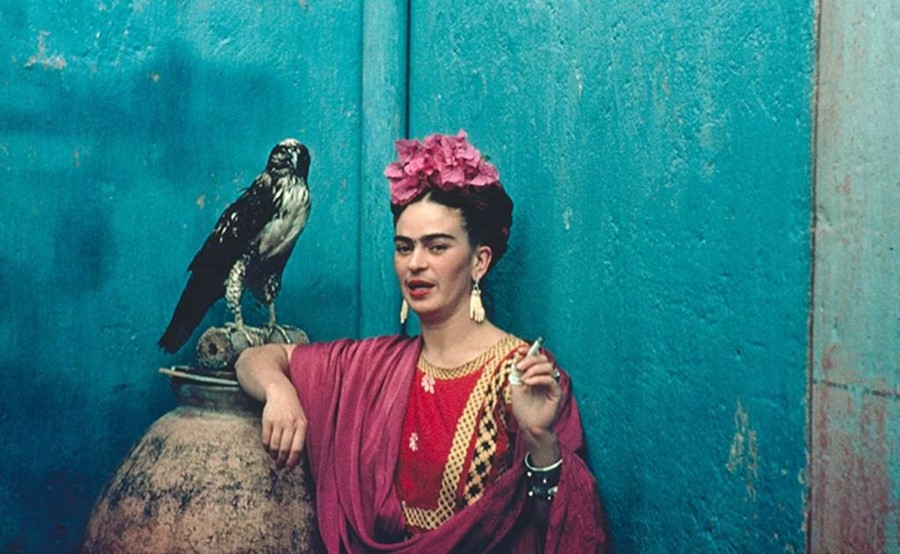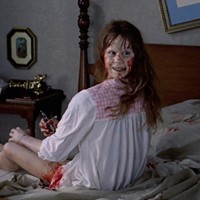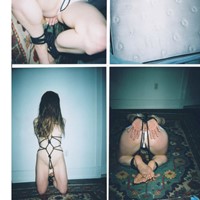As a new exhibition uncovers the private possessions of the revolutionary artist, we take you on a 26-letter trip through her world
Armed with a paintbrush and canvas, she was the pioneer of the selfie, long before the age of Instagram and filters. She was a feminist long before it reached buzzword status and a legend long before the Academy Award-winning Hollywood production of her life. Born in 1907, Frida Kahlo experienced more in her 47 years than most would several lifetimes over, from her traumatic health scares that she used to fuel her work to her political activism that put her in touch with the most gregarious of characters. With a life depicted as an allegory of sorts, Kahlo’s character, romantic affairs and signature unibrow commanded as much attention as her work.
As Japanese photographer Ishiuchi Miyako’s Frida is opens at Tokyo’s Shiseido Gallery – a show delving into her private possessions – we present an all-encompassing alphabetical guide to everything you need to know about the idiosyncratic señora.
A IS FOR AFFAIRS AND ADULTERY
Although she married Diego Rivera in 1929, both Kahlo and Rivera had fiery temperaments, acid tongues and numerous illicit affairs. Kahlo was bisexual, something that wasn’t openly discussed in her day, and had affairs with both men and women. The relations with women were of no concern to her husband, but the jealousy started to bubble when male counterparts became involved.
No better himself, Rivera had an affair with Cristina, Kahlo’s younger sister, which ultimately led to their divorce. The pair rewed in 1940, but the marriage proved equally if not more tempestuous than the first time around. Legend has it, for American women travelling to Mexico, having sex with Rivera was considered as essential as visiting Teotihuacan.
B IS FOR THE BLUE HOUSE
Known as ‘la Casa Azul’ to the locals, the Blue House is where Kahlo was born, where she grew up, where she lived with Rivera for a number of years, and also where she passed away. So named due to its striking cobalt blue exterior, the house is located in the Colonia del Carmen region of Coyoacán in Mexico City. All of Kahlo’s private possessions were locked away in the house after her death, with Rivera demanding that they not be revealed until at least 15 years after his own death. In 2004, that time had come, and the house became a museum showcasing a selection of her artworks and a pandora’s box of surprises from her personal life – the not-so-humble abode now attracting more than 25,000 visitors every month. Mexican plants decorate the patio, while pre-Columbian figures and huge, brightly painted Easter figures called ‘Judases’ punctuate the hallways. As if that wasn’t enough, the house is bursting with folk art in addition to her own art, leaving a sense of her presence.
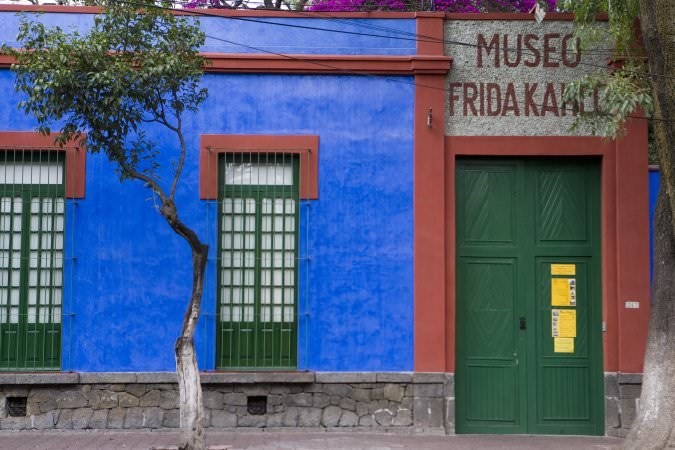
C IS FOR CINEMATIC GOLD
Julie Taymor’s biopic Frida was released in 2002, probably the most well-known of the film adaptations of her life. Nominated for six Academy Awards the year of its release, it went on to win two, for best make-up and best original score. Telling the stories of both her private escapades and professional achievements, Salma Hayek took on the leading role, while Alfred Molina played her lover, Diego Rivera.
D IS FOR DEATH
In 1953, Kahlo’s leg was amputated as it lost blood flow – apparently prompted by unnecessary surgery, causing her health to downwardly spiral. “They amputated my leg six months ago, they have given me centuries of torture and at moments I almost lost my reason. I keep on waiting to kill myself,” her diary read. “I hope the exit is joyful,” she wrote in her very last entry. “And I hope never to come back.” Rumours of morphine overdoses and suicide sprung off the end of these diary revelations and continue to circulate. Kahlo died on July 13, 1954 – the official cause of death was pulmonary embolism set on by pneumonia.
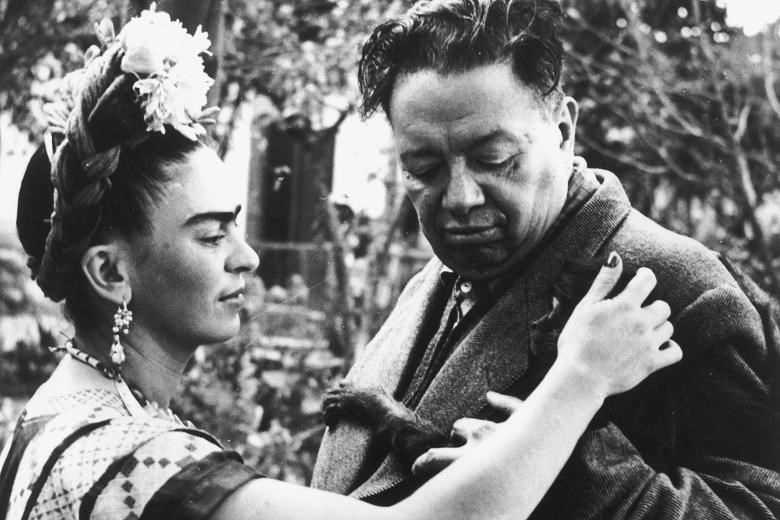
E IS FOR EMOTIONAL
Diego Rivera, the man Kahlo referred to as the “second accident in her life”, was the infamous womaniser and muralist to whom she was married for 25 years. Although born into a well-to-do family, Kahlo’s fellow Mexican set out to create dialogue around the working-class locals in their shared motherland – with a positive response from their own people and international critics alike. In his autobiography, which was released after her death, Rivera wrote that the day Kahlo died was the most tragic day of his life, adding that the most wonderful part of his life had been his love for her.
F IS FOR FULANG-CHANG
A gift from Rivera (he wasn’t one to go for the usual flowers or box of chocolates), Kahlo’s pet spider monkey Fulang-Chang featured in a number of the artist’s paintings. One of the most famous, “Fulang-Chang and I”, depicted Kahlo with the monkey looking to be sitting on her lap, leading people to interpret the monkey as a dark surrogate figure for the unborn children she and Rivera couldn’t conceive. In Mexican mythology, monkeys are symbols of lust, perhaps a more telling sign of Rivera’s emotive state in gifting the animal than meets the eye.
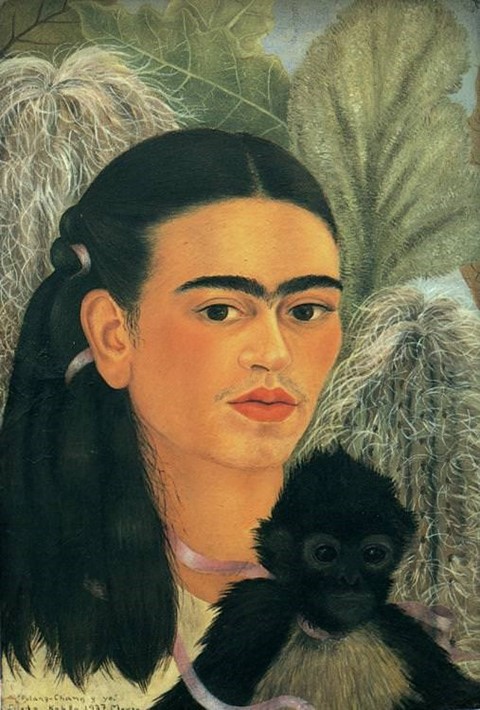
G IS FOR GIRL POWER
Arguably the most famous female artist in the history of planet Earth, Kahlo pushed the limits of convention in every way, so naturally, didn’t shy away from gender equality at a time when there really wasn’t much of it around. Through her work, she drew attention to the sexual lives of women – previously hush-hush and completely decorous – from her own experiences of things like abortion and miscarriage. It’s as though the limitations for women at that time was her catalyst, and spurred her on to paint whatever she damn well wanted to.
H IS FOR HEADPIECES
The symbolism in Mexican culture and the concentrated vibrancy of the colours that come with it can be seen emanating through Kahlo’s style – particularly the way she’d weave lively flowers through her braided hairstyles. Although a nod to national heritage, the blossoming adornments are also a striking metaphor for fertility, a subject she didn’t shy away from discussing.
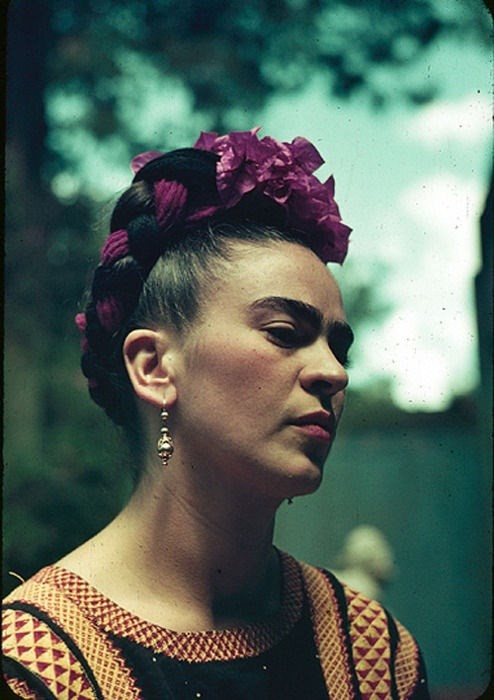
I IS FOR ISHIUCHI MIYAKOI
The Japanese photographer was given free rein to scour through Kahlo’s personal belongings between 2012 and 2013, when the Kahlo Foundation asked her to photograph the ordinary, forgotten possessions that were left unexamined after her death. The pieces that she selected to photograph are subject of the exhibition in Tokyo at the moment, and reveal the human side of the lady who led such a colourful life it’s almost difficult to believe.
J IS FOR JEWELLERY
A Frida Kahlo portrait isn’t a Frida Kahlo portrait without some form of eye-catching jewellery. Pre-Columbian ornamentation or authentic pieces created by indigenous Mexicans were recreated in her paintings, and can even be made out among the gritty grain of old photographs. The pieces weren’t admired for their handcrafted skill or seen as anything close to “fashionable” through the eyes of the traditionalist trend-followers around her. From dangling, mismatched earrings to chunky, decorative necklaces, Kahlo’s choices represented cultural preservation and her support of her heritage.
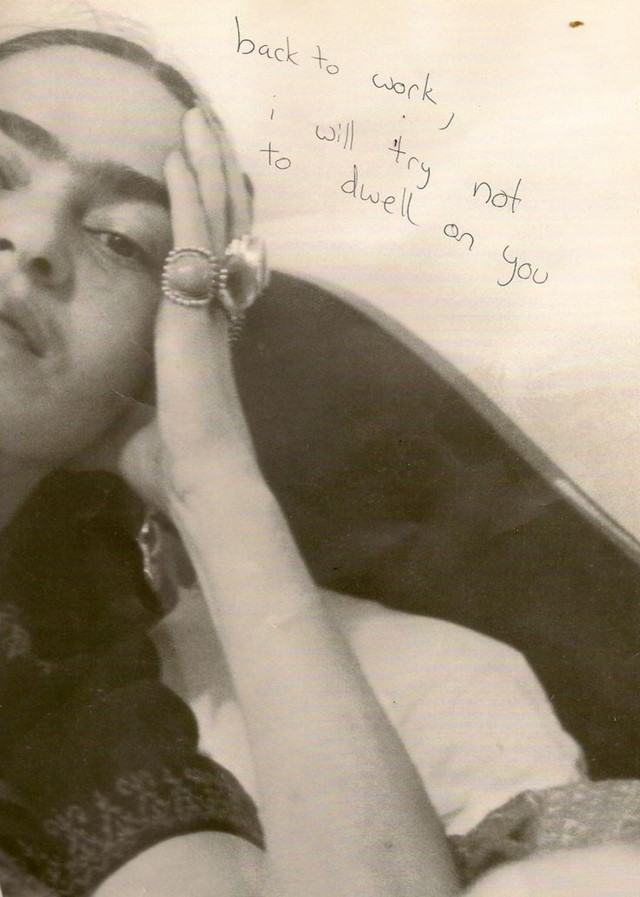
K IS FOR KNOWLEDGEABLE
In 1922, a new education policy was implemented after the Mexican Revolution, leading Kahlo to be selected for admission into a prestigious school – one of only 35 girls out of 2,000 students. We already know that she was politically and creatively aware from a young age, but she was also an talented academic, planning to study medicine, botany and the social sciences. Following her accident, her medical ambitions were abandoned, and her interest in poetry and literature, as well as portraiture, was given the attention it needed to develop.
L IS FOR LEON TROTSKY
As a Marxist revolutionary, Soviet politician and the founding leader of the Red Army, Trotsky and Kahlo were going to hit it off from the get-go. It all began when Kahlo and Rivera, active communist sympathisers, invited Trotsky to live with them when he was seeking political refuge from Joseph Stalin’s regime in the Soviet Union. Although married, he and Kahlo ended up getting on a little too well and engaged in an affair. It quickly fizzled out, but the artist and Trotsky stayed in touch until his assassination on the orders of Stalin in 1940. Kahlo was even a suspect in the murder, and was in police custody for questioning over a two-day period.
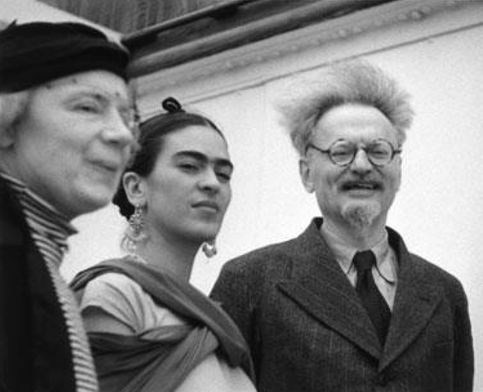
M IS FOR MEXICAN REVOLUTION
It’s 1910, and a three-year-old Frida Kahlo finds herself in the midst of the Mexican Revolution, an event of terrible importance to the whole the country. Her diaries contained screeds of stories about how her mother would hurry her and her sisters inside the house as gunfire rang through the streets of her impoverished hometown. Kahlo, dramatic as ever, would later claim that she was born in 1910, so that she could be directly associated with the revolution.
N IS FOR NEAR-IMPOSSIBLE NEGOTIATIONS
The Mexican government imposed rigid export limitations on Kahlo’s paintings in the mid-80s, which they refuse to change to this day. Only paintings that were exported to the US before the 60s or painted by Kahlo while travelling in the States are available for international purchase –“not even 10 per cent of her output,” confirmed Axel Stein, Sotheby’s senior vice president and head of the department of Latin American art. Madonna is one of the lucky few who own one of her paintings, an unsettling work entitled “My Birth” that she refused to lend to the Detroit Institute of Arts when they held an exhibition of Kahlo’s work – highlighting just how touchy and possessive buyers have become over the few pieces they can get their hands on.

O IS FOR ODD ORTHODONTICS
Kahlo never smiled in photographs. Even in times of joy and celebration, she maintained a consistently stern guise that came to be one of her alluring qualities. Although she shaped this into one of her signature traits, the initial reason that she didn’t smile was because she had incredibly crooked teeth and didn’t feel comfortable exposing them. In a lot of photos where she does crack a smile, she covers her mouth with her hand in an attempt to conceal her gnashers, but one photo does exist where she’s laughing amongst a crowd.
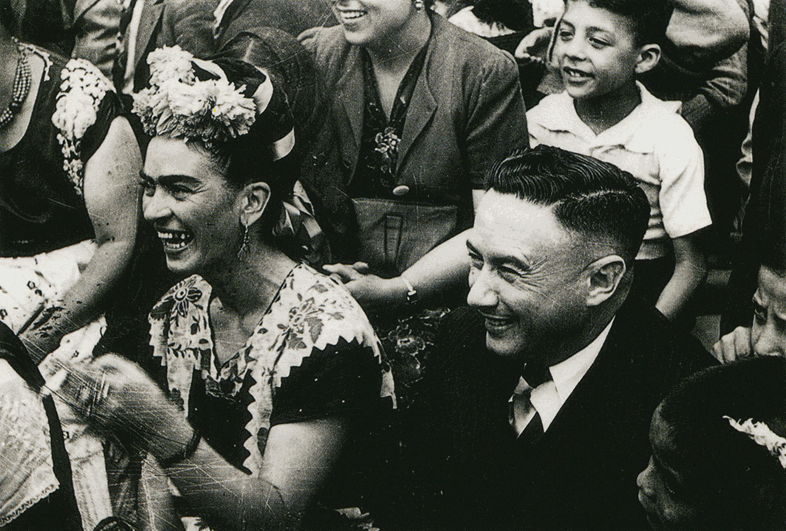
P IS FOR POLIO
Kahlo developed polio at the age of six, leaving her right leg thinner than the left – hence her choice of long, flowing skirts. She found herself bullied and called “pegleg” at school, but her father encouraged her to exercise to build her strength back up. In protest at having to do activities that she had no interest in, she selected boxing, wrestling and bicycling as her favoured options, shunning the expected choices of dance or perhaps swimming that a six-year-old girl would usually resort to.
“I tried to drown my sorrows, but the bastards learned how to swim, and now I am overwhelmed by this decent and good feeling” – Frida Kahlo
Q IS FOR QUEEN OF SURREALISM
Her paintings were labeled surrealist, and although they largely are, the unorthodox symbolism and often-extreme imagery Kahlo used was a way of communicating the perennial struggle that was her reality. She picked things up from both her husband and her father – a professional architectural photographer – to construct dark, sensual and quite frankly disturbing paintings. Her influence stemmed from elements of the aforementioned surrealist movement, fantasy and folklore to illustrate powerful narratives with an explicitness that hadn’t been explored by her contemporaries.
R IS FOR RED LIPSTICK
Her lips were as bold and outlandish as her life. In addition to her unibrow (coming up at U), one of Kahlo’s defining features was her voluptuous lips and her desire to have them stand out. Favouring a flash of red, the painter’s rich colour choice was one that is universally flattering and exudes a quiet confidence that most would usually reserve for special occasions. Not for Kahlo, who opted for loud lips on a near-daily basis, the polished choice coming as a bit of a contrast to her moustache.
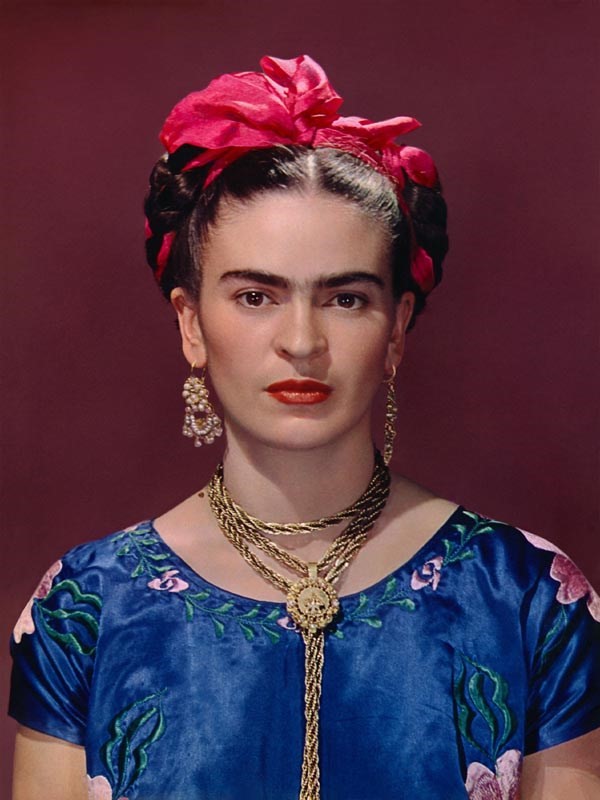
S IS FOR SELF PORTRAITS
Kahlo’s greatest muse was none other than herself. She began painting from her bed when recovering from her injuries and chose to paint her own portrait. She once said, “I paint myself because I am so often alone and because I am the subject I know best.” Fifty-five of her roughly 140 paintings are self-portraits, the large number suggesting that her traumatic childhood paved the way for the love/hate relationship that she had with herself.
T IS FOR TRAM CRASH
At the age of 18, a trolley car collided with a bus that Kahlo was on with her then-boyfriend, leaving the teen with a lengthy list of injuries that would go on to haunt her for the rest of her days. A broken spinal column, broken collarbone, broken ribs, broken pelvis, fractured right leg in 11 different places, crushed foot and dislocated shoulder was the bulk of it. The bus’s iron handrail also tragically sliced into her abdomen and uterus, leaving her unable to have children.
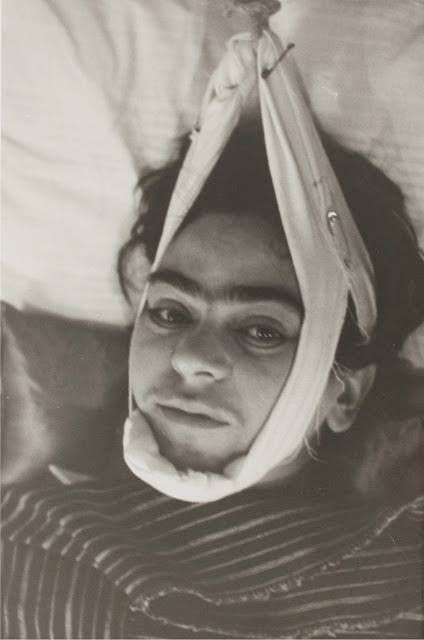
U IS FOR UNIBROW
Complemented by her moustache, Kahlo’s facial hair was a statement in itself. She was known to pencil in her eyebrows and exaggerate their size in her self-portraits. It was her way of outwardly expressing the duality of feminine and masculine disposition that she was inwardly digesting – a big, bold, furry message that she wasn’t going to conform to society’s standards of women.
V IS FOR VIVA LA VIDA
In the last-ever painting by Frida Kahlo, the artist – most likely aware that death was imminent – inscribed “Viva la Vida – Coyoacán 1954 México” on one of the watermelons. Almost like she was signing off, the last message from the notoriously negative painter was to live your life: good, positive advice from someone who most certainly lived theirs.
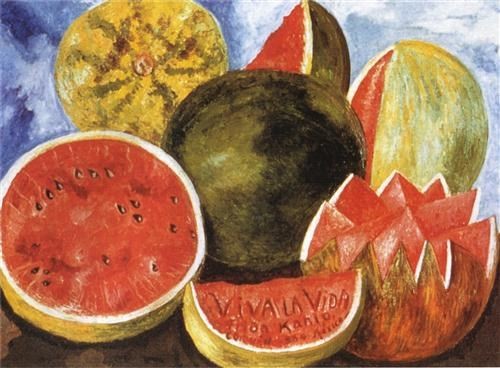
W IS FOR WELL AHEAD OF HER TIME
In terms of style, Kahlo’s taste for indigenous dress and rainbow-esque colour schemes made her stick out like a sore thumb when the masses were looking towards more modern sartorial standards. Her unorthodox approach in the context of 1930s Mexico is a neverending inspiration for designers, influencing Comme des Garçons, Givenchy and Jean Paul Gaultier in particular, with Gaultier designing an entire collection in her honour in 1998.
X IS FOR X-RATED
From the aforementioned affairs to the fact that she guzzled tequila from the bottle, told dirty jokes until the cows came home and smoked like a chimney, Kahlo’s censorious rating was on another level. Her paintings were extremely provocative and showed the nude form in the most vulgar, disturbing ways – views that, back then, women wouldn’t dare put out in the open at risk of being seen as indecent.
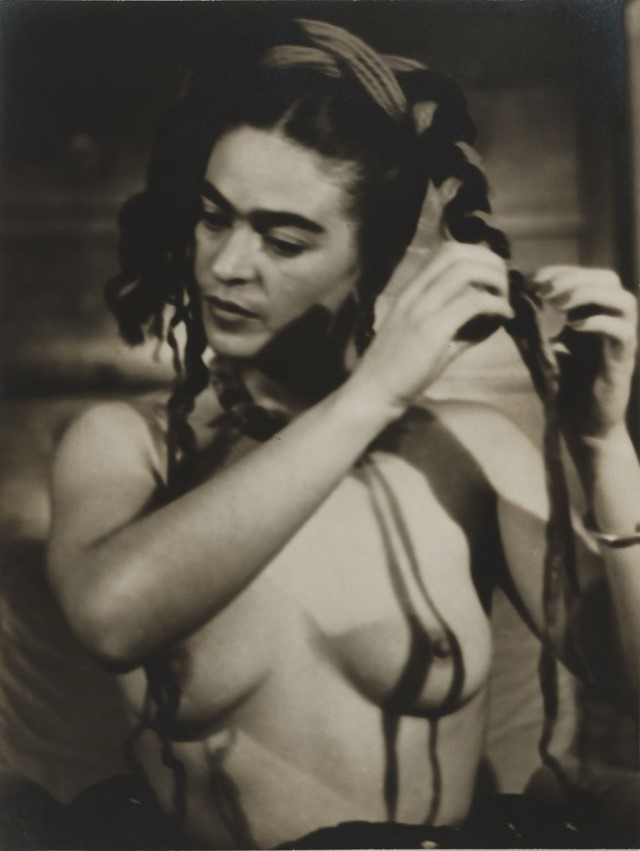
Y IS FOR YOUTH MAGNET
“You can agree or disagree with the sideshow, the marketing of it all. But we need a younger generation to get involved in the art world, and she draws them in. Young people dress like her. It’s a fad, but a welcome one,” said Gregorio Luke, director of the Museum of Latin American Art (MoLAA) in California on the rise of the Frida-maniac. He most probably labels the “fad” a “welcome one” because it’s also a highly profitable one, with her work pulling huge audiences to ticketed exhibitions that just so happen to come complete with conveniently placed gift shops.
Z IS FOR ZINGY SCENT
The perfume that Kahlo wore was Shocking by Elsa Schiaparelli. Those who knew her well said that you could tell when she was coming as you’d get a whiff of her perfume, with its base notes of spicy cloves and civet, as pre-warning. The bottle itself was shaped like an hourglass figure, and was promoted through a campaign that was highly suggestive compared to those that came before it. While nowadays you’d be hard-pressed to find a perfume ad that isn’t somewhat provocative, this was far from the case in 1937, and was most likely a contributing factor to her choice.
